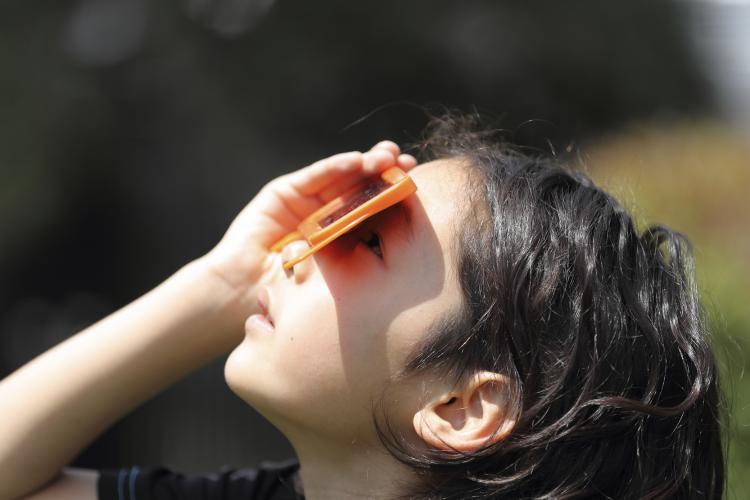
Dear Doctor: What kind of eye protection should be worn during a solar eclipse? I live in a part of Nebraska where the upcoming eclipse on Aug. 21 will be total.
Dear Reader: The path of totality for this eclipse, which arcs its way from Oregon to South Carolina, will cut a diagonal right through your state. As Californians living 900 miles south of the closest point of totality, we envy you.
We put our astronomy hats on and, with an assist from NASA, learned that the last total solar eclipse in North America occurred on July 7, 1972. (The wait for the next one won’t be quite so long — it’s coming on April 8, 2024, and will be visible from Texas to Maine.)
This year, if you have clear skies and live in the Lower 48, you’ll get to experience at least a partial eclipse. And that means that for the two to three hours the eclipse lasts, you must take precautions to protect your eyes and eyesight.
A solar eclipse occurs when the orbits of the moon and the sun align in a way that the moon blocks any part of the sun. In your area, you’ll get the rare spectacle known as totality, which is when the moon completely blocks the sun’s face. During up to 2 minutes 40 seconds of sudden nighttime — the light will be about as bright as a full moon — the solar corona, which is the flaming, roiling crown of the sun’s atmosphere, will be revealed.
During totality and only then, NASA scientists say it’s safe to look directly at the eclipse. (NASA has a great interactive map on its website that pinpoints the arc of totality.) However, before and after totality, you risk damage to your eyes and to your eyesight if you look directly at the sun.
That’s due to something called solar retinopathy, which happens when sunlight floods the retina, located at the back of the eyeball. This causes the rods and cones, the light-sensing cells that make vision possible, to release a flood of communication chemicals which can damage the retina. It’s often painless, so you don’t even realize damage is being done. And remember — even at 99 percent of totality, the sun’s rays can cause retinal damage.
Here, courtesy of NASA and (deep breath) the American Astronomical Society, the American Academy of Ophthalmology, the American Academy of Optometry and the National Science Foundation, are eclipse-viewing guidelines:
— The only safe way to look at the partially eclipsed sun is through special solar filters like “eclipse glasses,” or through handheld solar viewers.
— Homemade solar filters and ordinary sunglasses, no matter how dark, are NOT safe for looking at the sun.
— Never use a camera, telescope, binoculars or other optical device, whether filtered or unfiltered, to look at the un-eclipsed or partially eclipsed sun. They will concentrate the solar rays, which will enter your eye and cause serious injury.
— Full instructions, including the only four certified manufacturers of eclipse glasses, are available at eclipse2017.nasa.gov/safety. We strongly recommend you read (and share) this information.
[“source-siouxcityjournal”]
